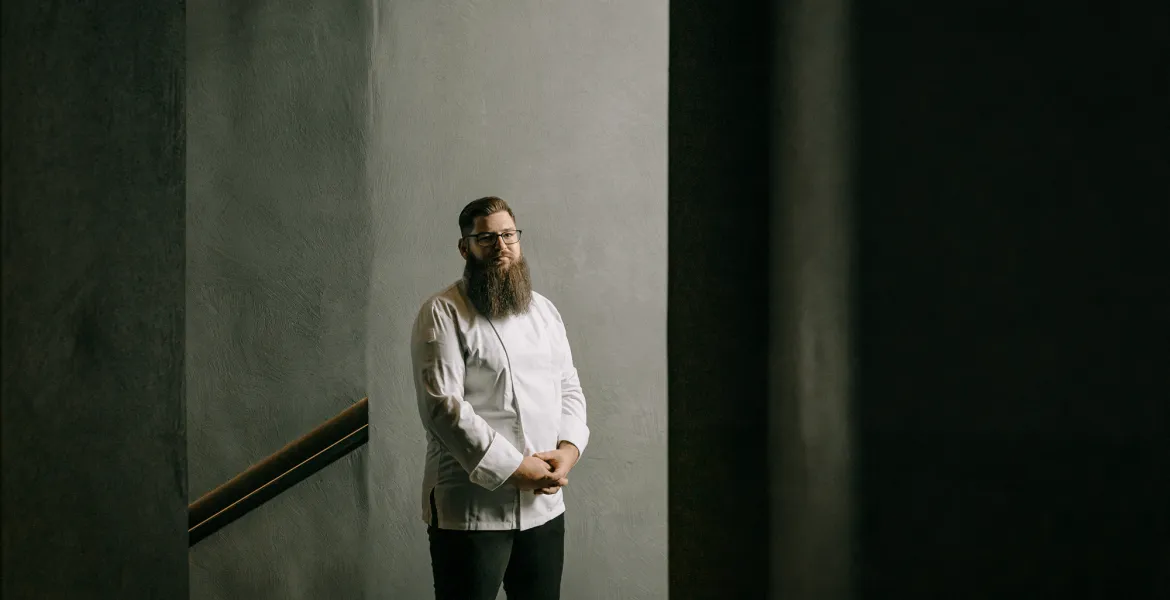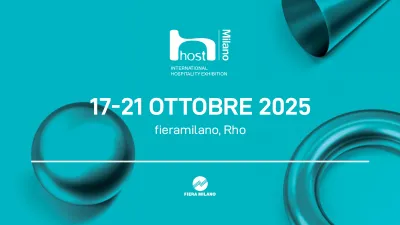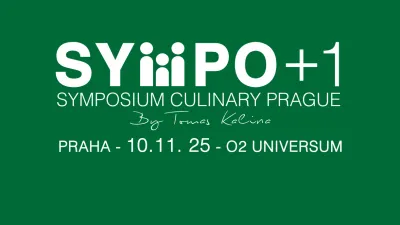Six chefs, thirteen Michelin stars, and one day that puts Prague at the center of the gastronomic map of Europe. On November 10, the Culinary Symposium Prague returns to the Congress Centre with a program unparalleled in the Czech Republic. On one stage, chefs from Norway, Spain, Belgium, Germany, and Austria will present themselves—personalities who are shaping world gastronomy and determining its future direction.
Their cuisines vary in technique and philosophy—from minimalist Nordic poetry to fiery Mediterranean expression to vegan fine dining precision. They have one thing in common: absolute dedication to craft and respect for the raw material. The symposium will thus not only be a showcase of famous names but above all an exceptional opportunity to get a glimpse into the kitchens where the future of gastronomy is being created.
From the End, a New Beginning
When Tomáš Kalina announced after last year's tenth edition that he was quitting the Culinary Symposium, few people blamed him. In ten years, he had built an event that managed to bring chefs from the best European restaurants to Prague, and the Czech public had become accustomed to it as a gastronomic feast. But Kalina might have felt differently.
"No pretensions, no Miss Czech Republic to introduce it, and no jugglers. It's about motivating chefs, moving forward, about culinary animalism. I enjoy discovering someone for the Czech Republic," he said in a recent interview with VisitChef magazine.
It was this phrase that eventually became the driving force behind the new beginning. Instead of an ending, there was a restart. This year's edition is meant to be more raw, more personal, and more strongly focused on what Kalina has always been most interested in—the craft. The symposium has thus evolved from a showcase of global stars to a space where experience, technique, and inspiration are shared.
An exceptional six chefs, who together hold thirteen Michelin stars, will come to Prague in November. Each of them represents a different face of contemporary European gastronomy—from the Nordic philosophy of purity to Spanish poetics to technically refined German precision.
The 13 Michelin Stars Will Join Those Who Have Already Shone in Prague
An exceptional six chefs, who together hold thirteen Michelin stars, will come to Prague in November. Each of them represents a different face of contemporary European gastronomy—from the Nordic philosophy of purity to Spanish poetics to technically refined German precision.
Esben Holmboe Bang, the man who gave Norway its first three Michelin stars, will bring to Prague a view that has defined a new era of Nordic cuisine. At his Oslo restaurant Maaemo, ingredients are not just ingredients, but the carriers of stories about landscape, season, and climate. Every course reflects Nordic restraint, ascetic beauty, and a deep respect for nature. Bang's cuisine seems to have been created in the rhythm of melting ice—slowly, deliberately, without effects, but with extraordinary precision and attention to detail.
From a completely different world comes Toño Pérez, chef of the three-star Atrio restaurant in Cáceres, Spain. When he talks about food, he uses words like "emotionality" and "memory." His cuisine is a tribute to his native Extremadura—a region that is rather unknown to most of the world, but in Pérez's rendition, it turns into a gastronomic map full of the flavors of Iberian pork, Torta del Casar cheese, and the smells of cork forests. The Atrio is now both a boutique hotel and a gallery. "Our work is a fusion of gastronomy, art, and architecture," says Pérez, whose precision and humility remind us that even three stars can have a human face.
Contrasting Pérez's refinement is the energy of Alejandro Serrano, Spain's youngest Michelin-starred chef. At the age of twenty-nine, Alejandro Serrano runs a restaurant in the inland town of Miranda de Ebro, building on the paradox of what he calls the Mar de Castilla—the sea of Castile. In a region without a coastline, he cooks a menu built around seafood, which he combines with local produce. His dishes are artistic compositions, and the pink tones on the plate are no accident—Serrano is a painter who returned to the brush during the pandemic and brought his artistic sensibilities to the kitchen. Each course tells a small story, and every detail is a reflection of his generational perspective: open, experimental, and sensitive.
Andreas Krolik of Frankfurt's Lafleur restaurant is the personification of technical excellence and ecological thinking. His cuisine has a firm foundation in the classical French school, but he pushes it towards modern sustainability. Krolik was one of the first European chefs to include a full vegan tasting menu in a two-star restaurant. It was not a fashionable gesture, but a logical step out of a belief that haute cuisine can be responsible. His cuisine is precise, delicate, and balanced—offering harmony instead of flashy contrasts. And therein lies its strength.
Austrian chef Stefan Doubek represents a new generation. His Viennese restaurant Doubek, awarded two stars shortly after opening, is a manifesto for a return to fire. You won't find gas or electricity in his kitchen—everything is cooked entirely with wood. Doubek thus combines Nordic minimalism, French technique, and Austrian directness. The result is a raw aesthetic in which smoke, the fragility of fish, and the rhythm of flames meet. At a time when most chefs rely on precise temperature control, his approach is both risky and fascinating.
The last guest at this year's Symposium is Thijs Vervloet from the Belgian restaurant Maison Colette. When he describes his cooking, he talks about balance and honesty. In his delivery, traditional French techniques meet Flemish warmth and a sense of seasonality. The signature dish is Rosalie—lobster prepared four ways, demonstrating his ability to layer flavors and textures. Attention to detail, working with butter, asparagus, or game, and a strong team culture make Vervloet a chef who doesn't try to impress but to leave a mark.
A Symposium That Turns Prague into a Gastronomic Epicenter
This year's Culinary Symposium Prague confirms that the event, which once started as a local platform for chefs to meet, is now transforming Czech gastronomy. The Symposium is a place where technical excellence merges with creative freedom and where the Czech audience gets a unique opportunity to observe the highest European gastronomy with their own eyes.
The event program is not just a showcase of Michelin stars, but above all an interactive laboratory of experience. Each chef opens up to the participants through demonstration preparations, tasting sessions, and discussions on innovation, seasonality, sustainability, and access to ingredients. For Czech professionals and enthusiastic amateurs alike, it is an intensive course of inspiration and a chance to compare themselves with international leaders.
The symposium also reflects the transformation of the entire Czech scene. If ten years ago the event was more of a showcase of foreign stars, today it is also a place for dialogue. Discussions on trends, plant-based menus, responsible production, and technical innovations are pushing even home cooks to new horizons. For one day, Prague becomes the epicenter of Central European gastronomy, where impulses are born that influence regional restaurants and projects.
And although the Symposium is about names and stars, its greatest value remains its authenticity. Each of the chefs present shares their personal story, their relationship with ingredients, and their perception of cuisine as an art, a craft, and a philosophy of life. At a time when gastronomy often seeks spectacle and show, Culinary Symposium Prague reminds us that haute cuisine is all about honesty, creativity, and courage.
Tomáš Kalina, whose vision has driven the Symposium for eleven years, sums up this idea simply: "I am all about motivating chefs, moving forward, about culinary animalism." This year's edition confirms this philosophy—it brings prestige, education, and inspiration in one, and proves that Prague can become a center where European gastronomy is not only presented but also shaped.







